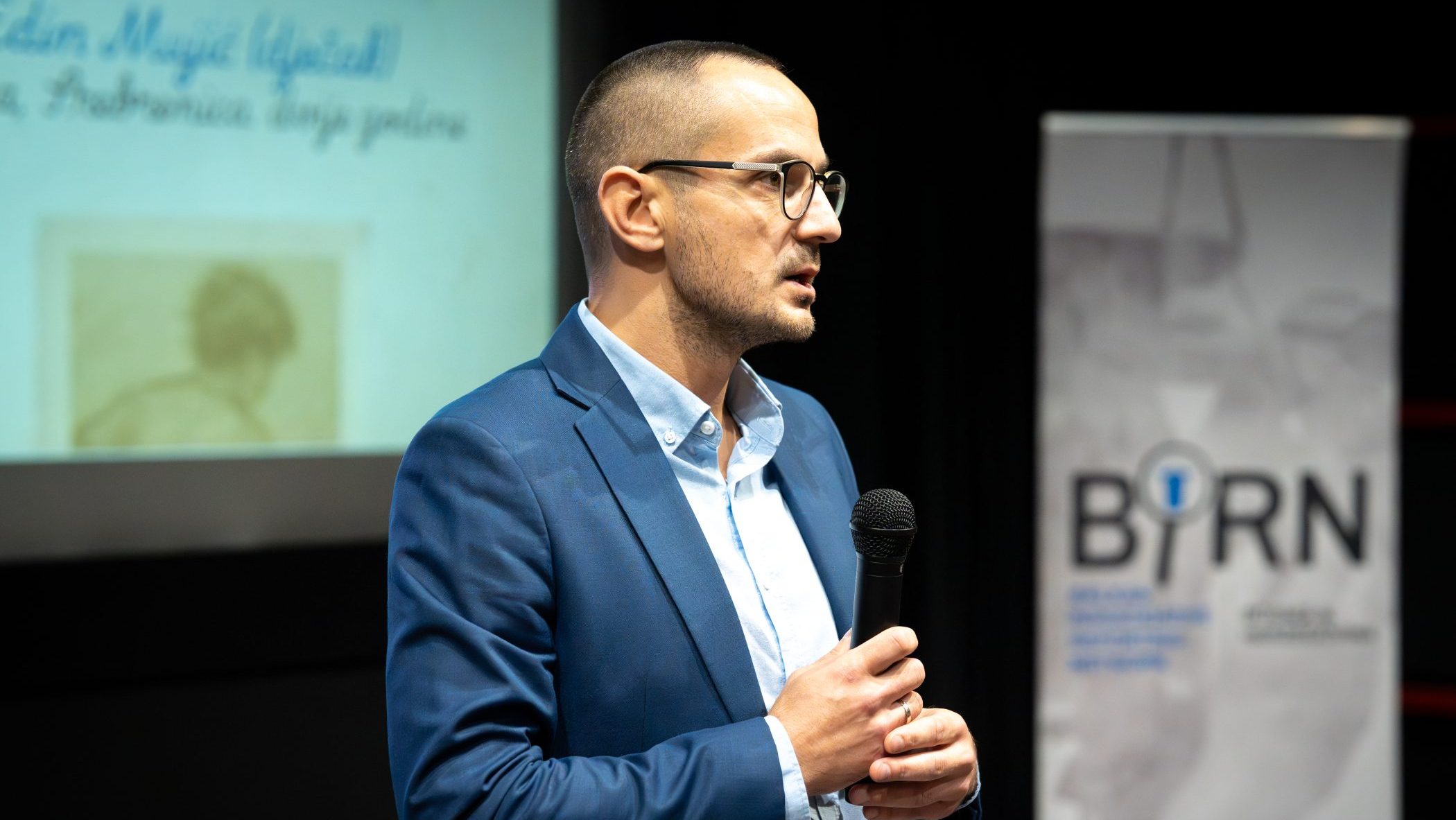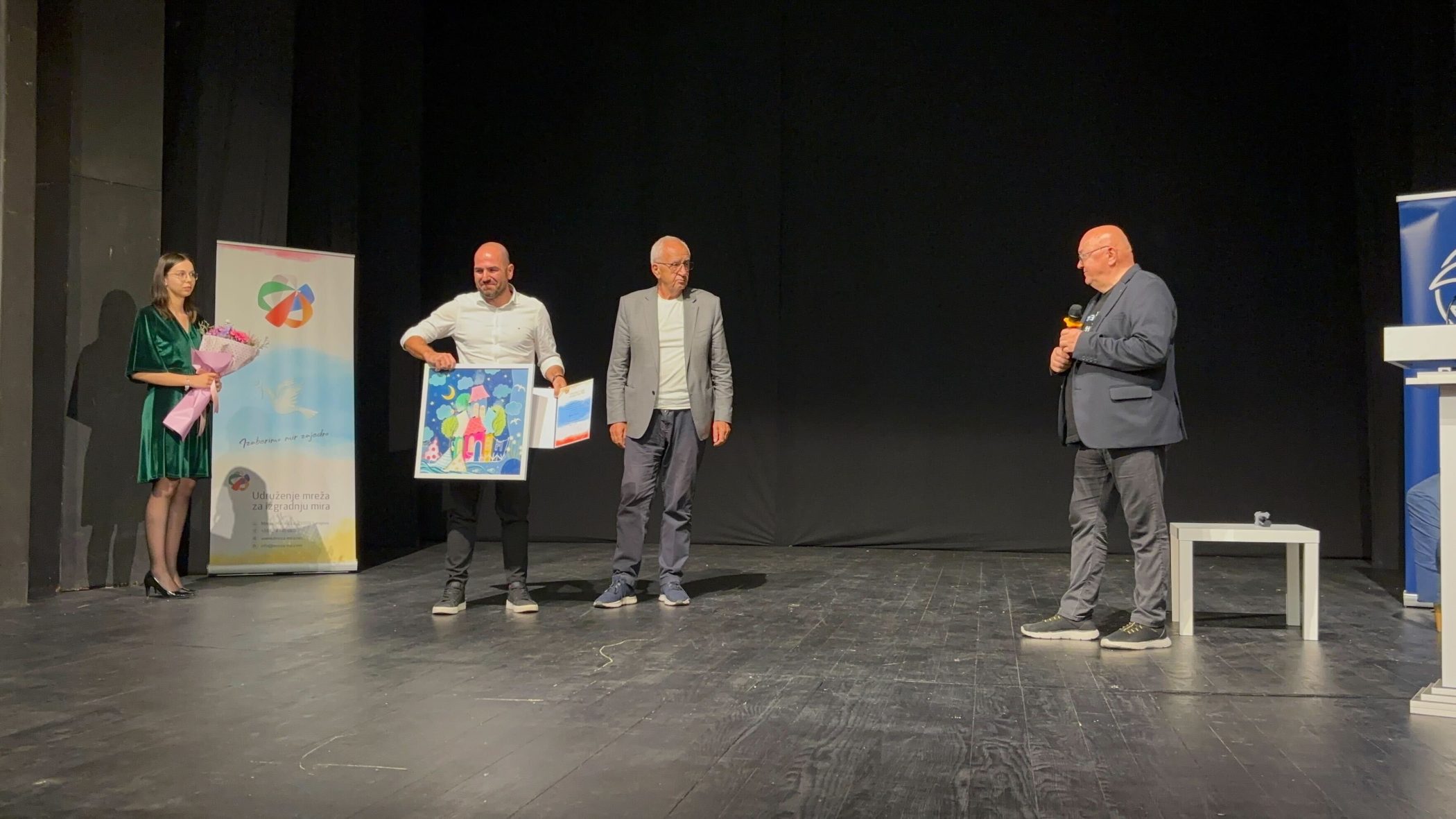This post is also available in: Bosnian
The brother of the Dragan Dabic’s tells Justice Report of his despair that top war crimes suspect Radovan Karadzic used the same name and surname, while Serbian authorities try to detect those who helped Karadzic live a double life.
Dragan Dabic was born in Tuzla in 1954 but was shot dead in a sniper attack in Sarajevo in 1993. His then young daughters and wife left the besieged city during the war and moved to Canada.
Dragan’s only brother, Mladen, still lives in Sarajevo. He was in disbelief when he heard that Radovan Karadzic used the same name and surname as his brother.
“He was 38 when he was killed. I cannot believe that Karadzic could use his name and surname,” Mladen Dabic told Justice Report.
Serbian media have announced that an investigation of Radovan Karadzic’s false identity is underway. At the moment of the arrest, he had an identification card, issued in the name of Dragan Dabic, with him. Some reports suggest that there are some indications that this might actually be the Dragan Dabic, who was killed in Sarajevo.
Bruno Vekaric, spokesman for the Serbian Prosecution, says that the local authorities are trying to find out who helped Karadzic to obtain the false identity, adding that an investigation of potential helpers was ongoing. Vekaric told the Serbian media that “very few people” knew his real identity.
Mladen Dabic, Dragan’s brother, resents the fact that Radovan Karadzic used the name of his late sibling, who was killed while he was queuing for humanitarian aid.
“When I heard the news that war criminal Radovan Karadzic is using my brother’s name, I could not believe it. It was horrible. This was an act of dishonor to a person, who was killed by the army commanded by Karadzic,” Mladen Dabic told Justice Report.
Dabic says that, over the past two days, his family has been under “an unbearable amount of stress”, adding that they could not believe that some people do not let his brother “lie in peace” 15 years after his death.
Mladen claims that he still has not managed to get in touch with his sister-in-law Gordana and their daughters, who live in Canada. They all left Sarajevo in a convoy six months after Dragan’s death.
Mladen does not know for sure how his brother died. He was told by other people that he was shot by a sniper, while others said that the bullet, which killed him, was fired from an anti-aircraft machine gun, which was also known as “death sower,” usually used by the Bosnian Serb army from their positions in the Vraca area.
“While I was on the frontline, my colleagues told me that my brother was killed. I could not believe that this happened to my Dragan. My mother had a heart attack when she heard the news,” Mladen said, adding that his brother was buried in the Lav cemetery in Sarajevo.
“I am trying, not to think about what is now happening to my brother’s name,” Mladen says, adding that “there are so many pieces of information floating around,” which, for sure, will “leave a huge scar.”
“There is nothing I can do about it. What I can do is to talk to media and lift this burden myself a little bit at least,” Dabic told Justice Report.
According to official data, 16 identifications cards have been issued in the name of Dragan Dabic in Bosnia and Herzegovina after the war.
Meanwhile Serbian police say they have indication suggesting that Karadzic had an identification card issued in Ruma, a northern Serbian town, which is under the jurisdiction of the Sremska Mitrovica police department.
“We have no information abut the arrest of Radovan Karadzic and we have nothing to say about the forged identification card issued in Ruma,” local police chief Zorav Smajic told the media, adding that the person named Dragan Dabic really lives in Ruma.
“That means that Karadzic’s identification card was forged,” he said.
In his statement given to Belgrade’s Vecernji list daily, the spokesman of the Prosecution said Karadzic got his new identity from “certain structures,” close to his Serbian Democratic Party in Bosnia which had connections with Serbian officials during the rule of Slobodan Milosevic.
“It is obvious that he started his parallel life a long time ago,” Vladimir Vukicevic, the prosecutor said.
Available data suggests that Karadzic has been using Dragan Dabic’s identity since 1999.

